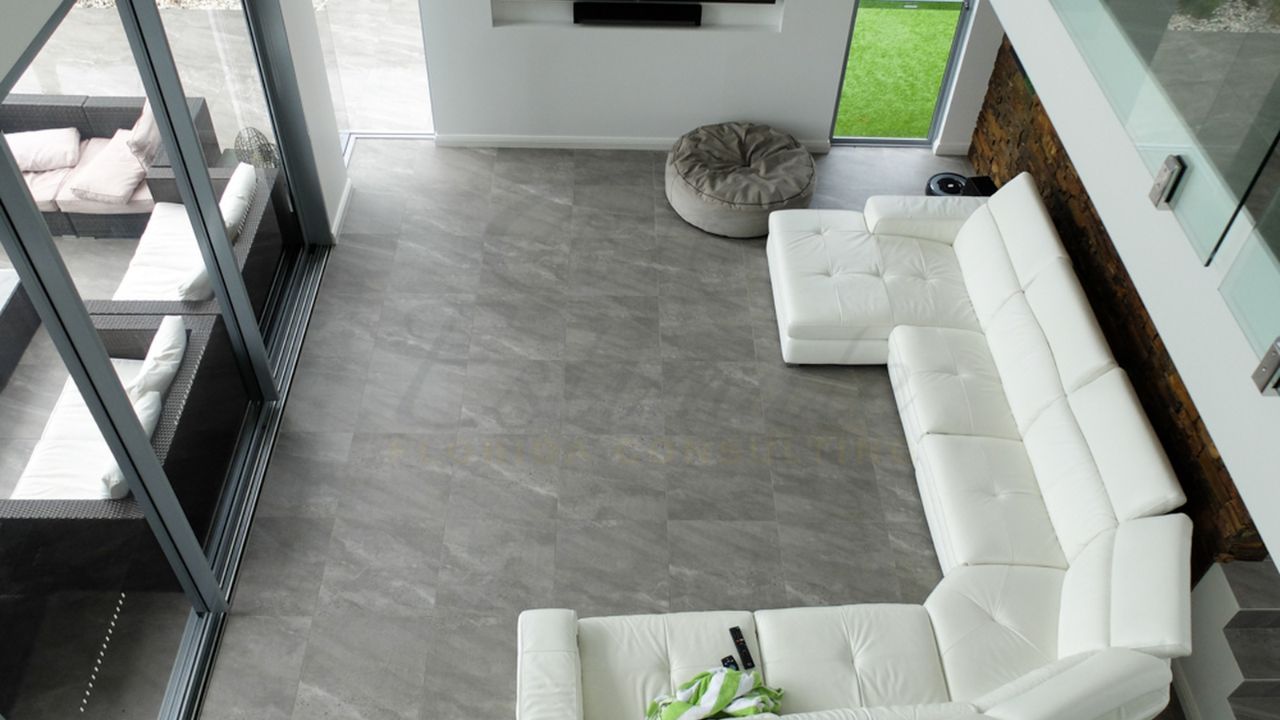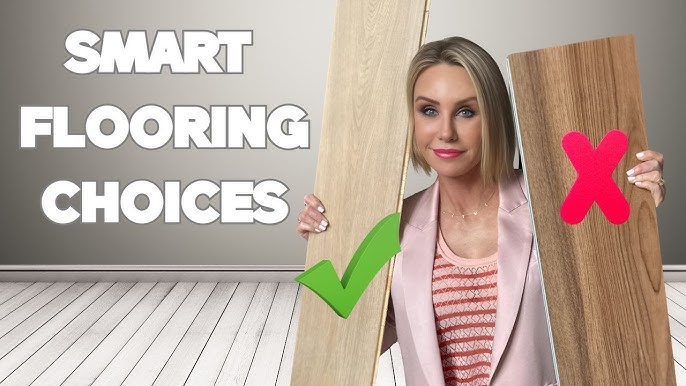Choosing the right flooring for your home can feel overwhelming. With so many options available, how do you know which one fits your style, budget, and daily needs?
The floor you pick will shape the look and feel of every room, so it’s important to get it right. In this guide, you’ll discover simple tips to help you make a smart choice—one that you’ll love for years to come.
Keep reading, and find the perfect flooring that matches your life and home perfectly.

Credit: www.uniccm.com
Factors To Consider
Choosing the right flooring for your home needs careful thought. The floor should match your lifestyle and needs.
Look at several key factors before making a final decision. These will help you pick the best option.
Budget And Cost
First, consider how much money you want to spend on flooring. Different materials have different prices.
Remember to include installation and future repair costs in your budget. This helps avoid surprises later.
- Hardwood usually costs more upfront
- Vinyl and laminate offer cheaper options
- Tile prices vary by type and quality
- Installation fees can differ widely
Durability And Lifespan
Think about how long the flooring will last. Some types handle wear and tear better than others.
Durable floors save money over time because they need fewer repairs or replacements.
- Tile and hardwood floors last many years
- Laminate can wear out faster in heavy traffic areas
- Vinyl is water-resistant and holds up well
- Carpet may need replacement sooner
Maintenance Needs
Check how much work you want to spend keeping the floor clean and nice. Some floors need more care.
Easy-to-clean floors can save time. Some materials need special products or treatments.
- Hardwood requires regular polishing
- Tile is easy to clean but grout needs care
- Vinyl can be cleaned with simple mopping
- Carpet needs vacuuming and stain removal
Aesthetic Appeal
The floor should match your home’s style and look. Choose colors and textures that fit your taste.
Think about how the floor works with your walls, furniture, and lighting.
- Hardwood offers a classic and warm look
- Tile can create a modern or traditional style
- Vinyl comes in many colors and patterns
- Carpet adds softness and comfort

Credit: estimatorflorida.com
Popular Flooring Types
Choosing the right flooring helps make your home comfortable and stylish. Different floors fit different rooms and budgets.
This guide explains popular flooring types to help you decide what works best for your home.
Hardwood Flooring
Hardwood flooring is made from real wood. It looks warm and natural in any room.
It lasts a long time but costs more than other floors. It needs regular cleaning and care.
- Durable and strong
- Can be sanded and refinished
- Natural wood patterns
- Susceptible to water damage
Laminate Flooring
Laminate flooring looks like wood but is made from synthetic materials. It is budget-friendly.
It is easy to install and clean. It resists scratches but can be damaged by water.
- Cost-effective alternative to hardwood
- Simple click-lock installation
- Scratch and stain resistant
- Not good for wet areas
Vinyl Flooring
Vinyl flooring is made from plastic materials. It comes in many styles, including wood and stone looks.
It is waterproof and soft underfoot. Vinyl is great for kitchens and bathrooms.
- Waterproof and durable
- Comfortable to walk on
- Easy to clean and maintain
- Available in sheets, tiles, or planks
Tile Flooring
Tile flooring uses ceramic, porcelain, or stone tiles. It is strong and water-resistant.
Tiles work well in bathrooms and kitchens. They can feel cold but are easy to clean.
- Highly durable and water-resistant
- Many colors and patterns available
- Can be cold and hard
- Needs grout cleaning
Carpet Flooring
Carpet flooring adds warmth and softness to rooms. It comes in many colors and textures.
Carpets can reduce noise and are comfortable to walk on. They need regular vacuuming and cleaning.
- Soft and warm underfoot
- Reduces noise in rooms
- Available in many styles
- Can stain and hold dust
Room-specific Flooring Choices
Choosing the right flooring makes your home comfortable and beautiful. Different rooms need different types of floors.
Look at each room’s use and conditions. Pick floors that fit the room’s needs well.
Living Room Options
The living room is a place for relaxing and meeting guests. Choose flooring that looks nice and feels warm.
Hardwood and laminate floors are popular here. They add style and are easy to clean.
- Wood floors give a classic, cozy look
- Laminate is budget-friendly and durable
- Area rugs add comfort and style
Kitchen Flooring Ideas
Kitchens need floors that can handle spills and heavy foot traffic. Choose materials that are water-resistant and easy to clean.
Tile and vinyl are great choices for kitchens. They resist water and stains well.
- Ceramic or porcelain tile is tough and water-proof
- Vinyl flooring is soft underfoot and easy to install
- Consider slip-resistant surfaces for safety
Bathroom Flooring Tips
Bathrooms need floors that resist moisture and mold. Choose waterproof and slip-proof materials.
Tile and vinyl work well in bathrooms. They stay dry and clean easily.
- Porcelain tile handles water and is easy to clean
- Vinyl flooring offers warmth and water resistance
- Use textured surfaces to prevent slipping
Bedroom Flooring Suggestions
Bedrooms should feel cozy and quiet. Soft flooring adds comfort and warmth to the room.
Carpet and wood are common choices. Carpet is soft, while wood adds a natural look.
- Carpet reduces noise and feels soft
- Hardwood offers a warm, elegant style
- Area rugs add color and comfort over wood floors
Installation Methods
Choosing the right flooring means understanding how it will be installed. Different floors use different ways to attach to the subfloor.
Knowing installation methods helps you pick the best option for your skills and home setup.
Diy Vs Professional
Some flooring types are easy for beginners to install. Others need special tools and skills.
DIY installation saves money but takes time and effort. Hiring a professional costs more but ensures good results.
- DIY suits simple floating floors
- Professionals are better for glue-down and nail-down floors
- Consider your comfort with tools and physical work
- Check if your warranty requires professional installation
Floating Floors
Floating floors do not attach to the subfloor. They rest on top and lock together like a puzzle.
These floors are easy to install and remove. They work well over many surfaces, including concrete and wood.
- No nails or glue needed
- Can be installed over old flooring
- Good for DIY projects
- May feel less solid underfoot
Glue-down Floors
Glue-down floors stick directly to the subfloor with adhesive. This method creates a stable surface.
It works well with vinyl, linoleum, and some hardwood floors. The glue must be spread evenly for a good bond.
- Requires careful surface preparation
- Needs drying time before use
- Harder to remove or replace
- Professional installation is often recommended
Nail-down Floors
Nail-down floors use nails or staples to fix wood planks to a wooden subfloor. This method is common for hardwood floors.
This installation is strong and durable. It requires experience and tools like a nail gun or hammer.
- Best for solid hardwood floors
- Needs clean, dry wooden subfloor
- Professional help is recommended
- Allows floor sanding and refinishing later
Eco-friendly Flooring Options
Choosing eco-friendly flooring helps protect the environment. It also keeps your home healthy and safe.
There are many green flooring choices. These include sustainable materials, recycled flooring, and low-VOC finishes.
Sustainable Materials
Sustainable flooring comes from fast-growing or renewable resources. It uses less energy to produce.
Popular sustainable materials include bamboo and cork. Bamboo grows quickly, making it a good choice.
- Bamboo is strong and easy to clean
- Cork is soft and naturally resists mold
- Both materials reduce harm to forests
Recycled Flooring
Recycled flooring uses materials from old products. This cuts down on waste and saves resources.
Examples include recycled wood, glass, and rubber. These materials give new life to old items.
- Recycled wood keeps trees standing
- Recycled glass adds color and shine
- Recycled rubber is soft and durable
Low-voc Finishes
Low-VOC finishes release fewer harmful chemicals into the air. They help keep indoor air clean.
These finishes protect your flooring and reduce health risks. They come in many styles and colors.
- Look for water-based or natural finishes
- Check labels for low-VOC or no-VOC claims
- Use finishes that dry quickly and smell less

Credit: www.youtube.com
Frequently Asked Questions
What Factors Should I Consider When Choosing Home Flooring?
Consider durability, style, budget, maintenance, and room usage. Each factor impacts flooring performance and appearance. Choose flooring that fits your lifestyle and enhances your home’s aesthetic.
Which Flooring Type Is Best For High-traffic Areas?
Tile, vinyl, and hardwood are ideal for high-traffic zones. They offer durability and easy maintenance. These options resist wear and maintain their look over time.
How Do I Select Flooring For Pets And Kids?
Choose scratch-resistant, waterproof, and easy-to-clean materials like vinyl or laminate. These floors withstand spills, scratches, and heavy use, ensuring longevity and safety for pets and children.
What Flooring Suits Humid Or Wet Areas Best?
Water-resistant options like ceramic tile, vinyl, and waterproof laminate work best. They prevent moisture damage and mold growth, maintaining durability and hygiene in wet areas.
Conclusion
Choosing the right flooring enhances your home’s beauty and comfort. Consider your lifestyle and personal style. Each material has its benefits and drawbacks. Hardwood adds warmth, while tiles offer durability. Laminate provides an affordable option. Carpet brings coziness to rooms.
Think about the room’s purpose and foot traffic. Budget plays a crucial role too. Don’t rush the decision. Take time to explore options and consult professionals if needed. The right choice will bring joy and value to your home for years.
Happy flooring!
8 min read

